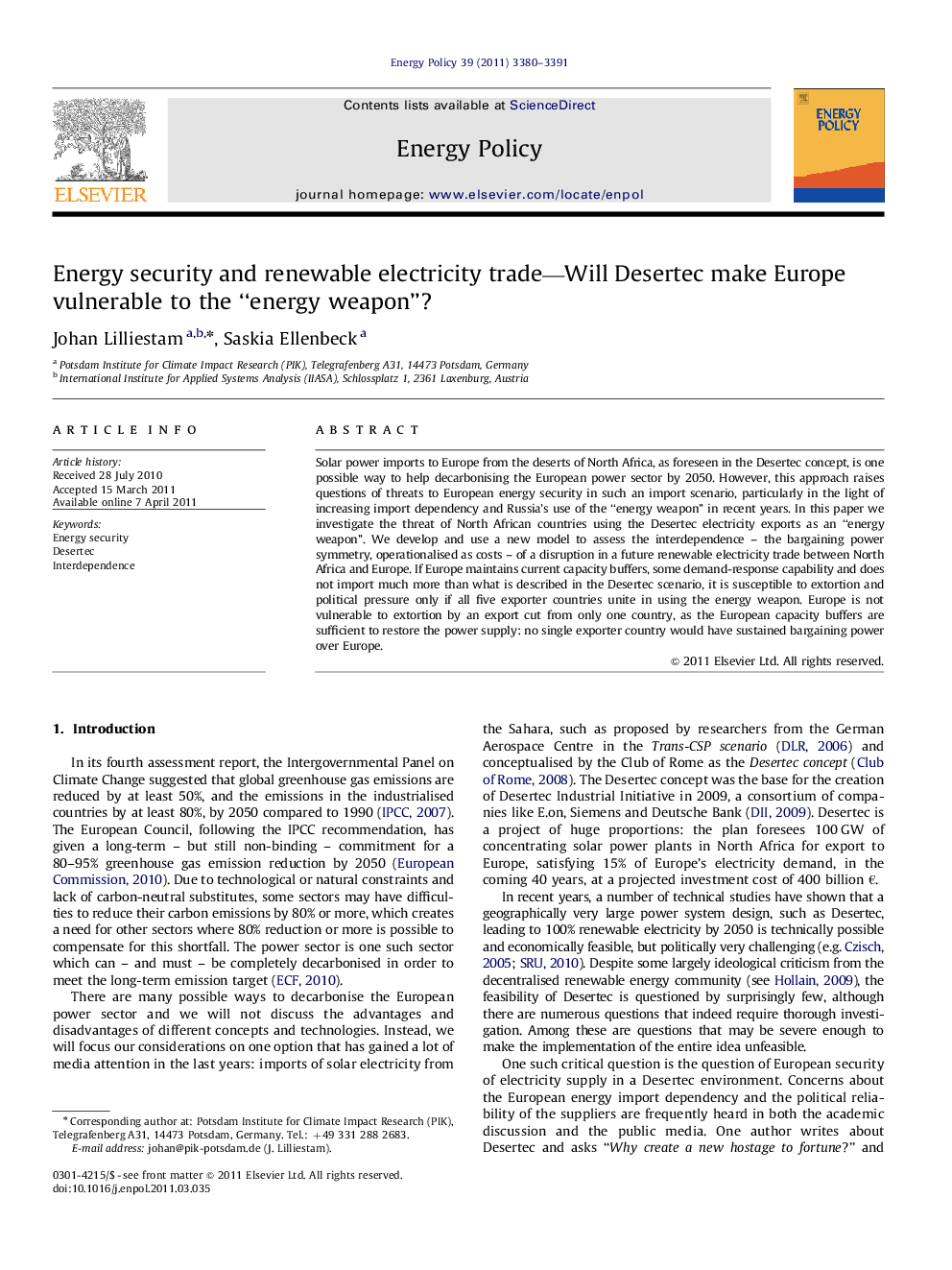| Article ID | Journal | Published Year | Pages | File Type |
|---|---|---|---|---|
| 994921 | Energy Policy | 2011 | 12 Pages |
Solar power imports to Europe from the deserts of North Africa, as foreseen in the Desertec concept, is one possible way to help decarbonising the European power sector by 2050. However, this approach raises questions of threats to European energy security in such an import scenario, particularly in the light of increasing import dependency and Russia's use of the “energy weapon” in recent years. In this paper we investigate the threat of North African countries using the Desertec electricity exports as an “energy weapon”. We develop and use a new model to assess the interdependence – the bargaining power symmetry, operationalised as costs – of a disruption in a future renewable electricity trade between North Africa and Europe. If Europe maintains current capacity buffers, some demand-response capability and does not import much more than what is described in the Desertec scenario, it is susceptible to extortion and political pressure only if all five exporter countries unite in using the energy weapon. Europe is not vulnerable to extortion by an export cut from only one country, as the European capacity buffers are sufficient to restore the power supply: no single exporter country would have sustained bargaining power over Europe.
► European vulnerability to energy weapon extortion in a Desertec-style electricity future is assessed. ► The vulnerability to the energy weapon is conceptualised as the direct disruption costs on both sides. ► The paper shows that Europe is not vulnerable to single-country export disruptions. ► If all exporters cut supplies simultaneously, Europe may be vulnerable to the energy weapon.
